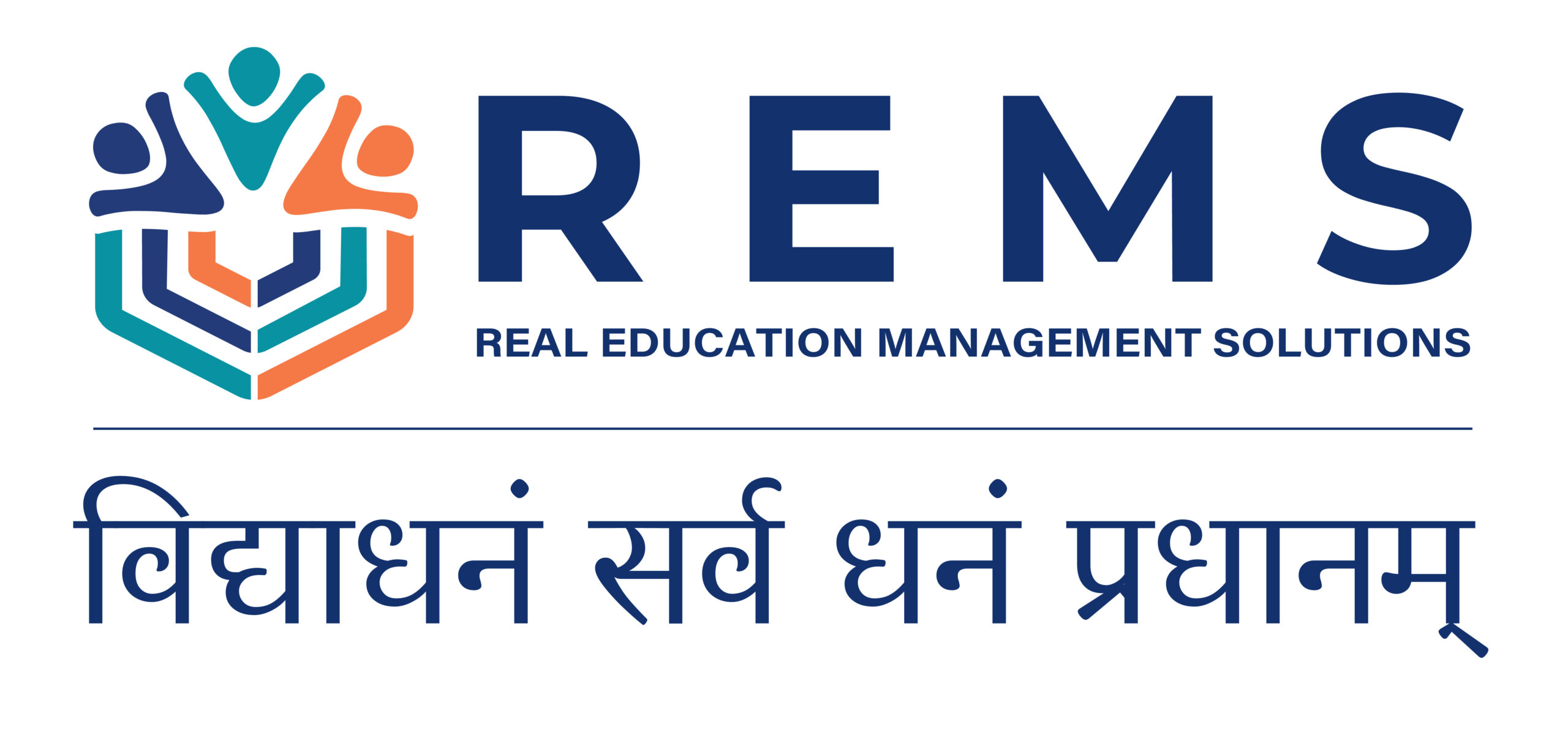The journey of establishing a new school or college is a multifaceted one, involving a myriad of decisions, regulatory compliance, infrastructural challenges, and academic programming. Whether you’re setting up a primary school or a higher education institution, the process requires meticulous planning, seamless coordination, and effective management across multiple fronts. The sheer complexity of navigating this intricate terrain can often overwhelm even the most well-prepared educational entrepreneurs.
In this blog, we explore the key challenges involved in establishing schools and colleges and how REMS (Real Education Management Systems) can simplify and optimize this process. REMS serves as an indispensable tool for new institutions, ensuring smooth operations, regulatory compliance, and seamless integration of key processes right from the inception.
1. Regulatory Compliance and Accreditation: A Daunting Task
One of the first hurdles when establishing a school or college is meeting the regulatory requirements and obtaining necessary approvals. These regulations vary widely depending on the country, region, or even specific type of institution. In addition to fulfilling local education department requirements, there are often accreditation standards to be met for academic programs, faculty qualifications, and infrastructure.
How REMS Helps:
- Centralized Documentation Management: REMS acts as a centralized hub for managing all the necessary documentation required for accreditation and compliance, such as application forms, approval letters, and regulatory filings.
- Automated Alerts and Reminders: REMS automatically sends reminders for renewal deadlines, submissions, and important regulatory updates, ensuring that no compliance requirement is missed.
- Report Generation for Authorities: The system can quickly generate accurate reports and documentation, streamlining the process of submitting evidence to regulatory bodies and accrediting agencies.
2. Infrastructure Planning and Management
Whether you’re designing the layout of a school or managing the construction of a college campus, infrastructure planning is a critical aspect of establishing an educational institution. This includes not only physical spaces like classrooms, labs, and libraries but also ensuring that the IT infrastructure, security systems, and communication networks are up to par.
How REMS Helps:
- Facility Management Integration: REMS integrates facility management features that assist in tracking infrastructure needs, such as space utilization, equipment procurement, and maintenance schedules.
- Data-Driven Space Allocation: Using data analytics, REMS helps educational institutions better understand space allocation based on student-teacher ratios, class schedules, and facility usage trends.
- Budgeting and Resource Planning: The system aids in resource allocation by providing real-time financial tracking, helping institutions keep costs within budget during the planning and construction phases.
3. Curriculum Design and Academic Planning
Another key challenge in establishing a school or college is designing an academic curriculum that meets educational standards, industry requirements, and student expectations. Whether you are offering a traditional K-12 program or a diverse array of college degrees, the curriculum must be comprehensive, flexible, and aligned with accreditation guidelines.
How REMS Helps:
- Curriculum Mapping: REMS helps map out academic curricula in alignment with regulatory standards, ensuring that all required subjects and qualifications are included. The system also facilitates the creation of elective options, cross-disciplinary programs, and project-based learning modules.
- Program Development Tools: For colleges, REMS offers program development tools that help institutions define course structures, credit hours, prerequisites, and learning outcomes—ensuring clarity and consistency.
- Student Progress Tracking: REMS enables continuous tracking of student performance within the established curriculum, allowing institutions to evaluate whether students are meeting academic goals and whether the curriculum needs adjustments.
4. Faculty Recruitment and Management
Hiring qualified faculty members is one of the most important steps in establishing a school or college. However, recruitment can be a time-consuming and complex process, especially when considering regulatory qualifications, salary structures, and professional development needs.
How REMS Helps:
- Centralized Faculty Database: REMS maintains a comprehensive faculty database that includes qualifications, certifications, teaching experience, and availability, making it easier to track and manage faculty recruitment.
- Automated Hiring Workflow: The system can streamline the recruitment process by automating job postings, candidate evaluations, interview scheduling, and onboarding, thus saving valuable time for the administration.
- Performance Evaluation and Professional Development: REMS supports continuous professional development by integrating faculty performance reviews and offering development modules, ensuring that your team stays at the top of their teaching game.
5. Student Enrollment and Admission Processes
Establishing a smooth and efficient student enrollment and admission process is critical, especially when trying to attract students to a new institution. A poorly managed admissions process can result in delays, confusion, and frustration for both students and administrators.
How REMS Helps:
- Online Admission Portal: REMS provides an easy-to-use online admission portal where prospective students can submit applications, upload documents, and track the status of their applications in real time.
- Automated Communication: The system automates communication with prospective students, sending personalized emails about application status, interviews, documents needed, and deadlines.
- Admission Analytics: REMS offers detailed analytics on admission trends, helping the institution track applicant demographics, geographical distribution, and program popularity for future planning.
6. Financial Planning and Management
For new schools and colleges, managing financial resources is one of the most significant challenges. Setting up a tuition fee structure, budgeting for operations, and ensuring that financial resources are optimally utilized is a complex process that requires constant oversight.
How REMS Helps:
- Integrated Financial Management: REMS integrates financial management features, including fee collection, financial reporting, and budget forecasting, allowing schools and colleges to manage their finances in a streamlined manner.
- Tuition and Fee Automation: REMS automates tuition fee calculations, receipts, and reminders, ensuring that both students and administrators have clarity on payment schedules and outstanding dues.
- Financial Transparency: The system generates transparent financial reports for stakeholders, enabling both management and trustees to stay informed about the institution’s financial health.
7. Admissions Marketing and Branding
Successfully marketing a new school or college is essential to its growth. Attracting students and parents to a new institution requires effective branding, outreach, and engagement through digital platforms, events, and information sessions.
How REMS Helps:
- Data-Driven Marketing Insights: REMS provides insights into student demographics, preferences, and application trends, helping institutions fine-tune their marketing strategies and target the right audience.
- Engagement Platforms: REMS supports automated communication through emails, SMS, and social media integrations, allowing schools to stay in touch with prospective students and build relationships long before enrollment.
- Lead Management: REMS includes a lead management system that helps institutions track, nurture, and convert potential students into enrolled ones, ensuring no opportunity is lost.
8. Long-Term Sustainability and Growth
Once the institution is established, ensuring its long-term sustainability and growth becomes the priority. Strategic planning, student retention, quality assurance, and continuous improvement are key to ensuring that the institution remains relevant and effective.
How REMS Helps:
- Data Analytics for Strategic Planning: REMS provides data analytics tools that help leadership teams track academic outcomes, faculty performance, and student satisfaction. This data supports strategic decision-making, from expanding course offerings to improving campus facilities.
- Continuous Feedback Mechanisms: Through surveys and feedback loops, REMS gathers insights from students, parents, and faculty, helping institutions continually improve the student experience and their operational processes.
Conclusion: A Seamless Foundation for Success
The process of establishing a school or college is undoubtedly complex, requiring attention to numerous administrative, academic, and financial details. However, with REMS, this intricate journey becomes significantly easier. By providing tools for regulatory compliance, infrastructure management, academic planning, and financial control, REMS enables institutions to focus on their core mission—delivering quality education.
For entrepreneurs, administrators, and educators looking to establish a new educational institution, REMS offers a comprehensive, all-in-one solution that supports the entire lifecycle of the institution, from planning to growth. By automating processes, offering data-driven insights, and ensuring seamless communication, REMS helps new schools and colleges build a strong foundation for long-term success.

